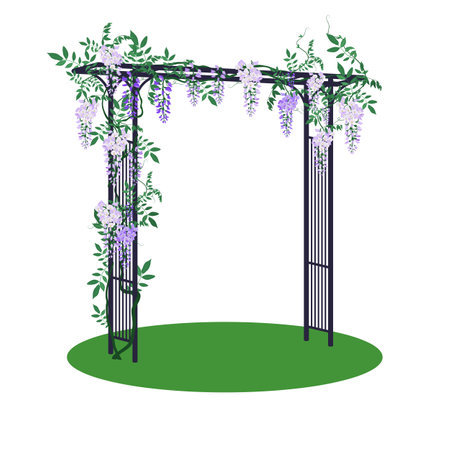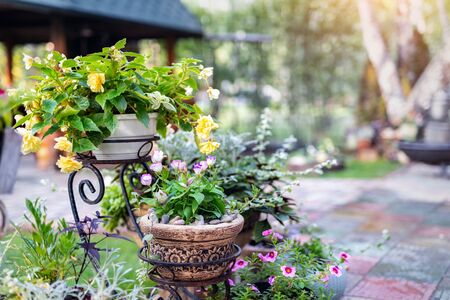Understanding Feng Shui Principles for Outdoor Spaces
Feng Shui, the ancient Chinese art of arranging environments to promote balance and positive energy (Qi), is not just for interiors. In today’s American landscape, applying Feng Shui to gardens and yards offers a fresh perspective on outdoor living. The core principles—such as the balance of Yin and Yang, the five elements (wood, fire, earth, metal, water), and the strategic flow of Qi—can transform even the most modern backyard into a harmonious retreat. By understanding how these concepts fit within a contemporary American context, you can create outdoor spaces that support relaxation, social connection, and well-being. Whether you have a sprawling suburban lawn or a compact urban patio, adapting Feng Shui means observing the natural world, responding to local climate and culture, and thoughtfully placing plants, paths, and decor to nurture both beauty and energy flow. This approach allows you to design gardens that feel uniquely inviting while still honoring timeless principles.
2. Assessing Your Garden’s Energy Flow
Understanding and optimizing the flow of chi—pronounced “chee” and often translated as life force or energy—is a core principle in Feng Shui for garden spaces. In American landscaping culture, this means looking beyond aesthetics and function to truly feel how energy moves through your outdoor area. A well-balanced garden invites relaxation, harmony, and prosperity, while areas of stagnant energy can lead to discomfort or even neglect.
Identifying Energy Flow Patterns
Begin by walking slowly around your garden at different times of day. Notice where you naturally pause, which pathways feel inviting, and which spots are overlooked or unused. Pay special attention to:
- Entryways: Are they clear and welcoming?
- Paths: Do they guide movement gently or block it abruptly?
- Corners: Do sharp edges trap energy?
- Gathering Spaces: Are there cozy nooks or open areas that encourage connection?
Common Signs of Stagnant vs. Balanced Chi
| Stagnant Chi | Balanced Chi |
|---|---|
| Piled-up debris or clutter Bare patches with little growth Avoided, shadowy corners Uninviting seating areas Noisy mechanical distractions |
Lush, healthy plants Smooth, curved walkways Naturally lit spaces Comfortable spots to linger Sensory balance: birdsong, water features |
The Role of Natural Elements in Energy Flow
The five elements—wood, fire, earth, metal, and water—play a significant part in shaping chi outdoors. Check if your landscape has an overabundance or lack of any element; for example, too much hardscape (concrete or stone) may suppress growth energy, while excessive water can create emotional heaviness. Strive for a harmonious mix that matches your intentions for the space.
Quick Tips for Enhancing Outdoor Chi
- Add gentle curves to paths instead of sharp angles.
- Introduce wind chimes or native plants to stimulate movement.
- Create focal points like a birdbath or seating circle to attract positive energy.
- Remove dead plants and fix broken items promptly.
- Balance shade and sunlight for both comfort and plant health.
By regularly assessing and adjusting your garden’s energy flow using these Feng Shui-inspired strategies—and blending them with practical American landscaping know-how—you’ll cultivate an outdoor space that feels vibrant, welcoming, and truly alive.

3. Outdoor Cures: Plants, Water, and Pathways
When it comes to applying Feng Shui outdoors, the right cures and enhancements are essential for creating a harmonious garden space that aligns with both energy flow and American landscape sensibilities.
Plant Placement for Positive Qi
The strategic arrangement of plants is foundational in Feng Shui landscaping. For American gardens, consider incorporating native species like dogwoods, hydrangeas, or maples, which not only thrive locally but also attract beneficial energy. Place tall plants or trees at the back of your garden to provide support and protection, symbolizing the “Black Tortoise” in classical Feng Shui. Use low-growing flowers or ground covers at the front to invite fresh Qi and enhance curb appeal.
Water Features for Abundance
Water is a powerful symbol of wealth and vitality in Feng Shui. To embrace this principle in your outdoor space, add elements such as birdbaths, fountains, or small ponds. Always ensure water flows toward your home rather than away from it; this represents abundance coming in rather than leaving. In American suburban settings, a modest water feature near the entrance or on a patio can serve as a practical yet auspicious cure without overwhelming the landscape.
Pathways That Guide Energy
Garden pathways are more than just functional—they direct the flow of Qi throughout your yard. Instead of straight lines, use gently curving walkways made from materials that suit your region, such as flagstone, brick, or gravel. These meandering paths slow down energy and create a sense of discovery while connecting key areas like patios, vegetable beds, or play zones. Adding solar-powered lights along pathways can further enhance safety and attract positive energy after dusk.
Integrating Cures for Cohesion
The real art of Feng Shui landscaping lies in blending these cures—plants, water features, and pathways—into a cohesive whole that feels natural yet purposeful. By thoughtfully selecting elements that resonate with local culture and climate while honoring Feng Shui principles, you can cultivate an outdoor retreat that supports well-being and prosperity for everyone who enters.
4. Feng Shui Color and Material Tips for Landscaping
When designing your garden through a Feng Shui lens, the colors and materials you choose play a crucial role in balancing the five elements—Wood, Fire, Earth, Metal, and Water. In American landscaping, this means blending practical outdoor materials with an intentional color palette to enhance the flow of chi (energy) while keeping your yard inviting and harmonious.
Integrating the Five Elements with Colors & Materials
Each element corresponds to specific colors and materials. Use the table below as a guide for selecting stones, mulch, and décor that align with each element’s energy:
| Element | Colors | Suggested Materials | Placement Tips |
|---|---|---|---|
| Wood | Green, Brown | Wooden planters, trellises, bark mulch | Use in East & Southeast areas; promote growth & vitality |
| Fire | Red, Orange, Purple | Clay pots, red flowers, lanterns | Add to South; boost energy & recognition |
| Earth | Yellow, Beige, Tan | Stone pathways, ceramic tiles, sand-colored gravel | Center & Southwest; ground energy & support relationships |
| Metal | White, Gray, Metallics | Pebbles, metal sculptures, wind chimes | West & Northwest; foster clarity & helpful connections |
| Water | Blue, Black | Ponds, fountains, dark river stones | North; encourage career opportunities & flow |
Selecting Mulch and Stones for Chi Flow
Avoid using harsh black plastic or rubber mulches that block energy. Instead, go for natural wood chips or shredded bark for warmth (Wood element), or river rock and pea gravel for a calming Water or Earth presence. For stone selection, smooth-edged rocks are preferred over jagged ones to keep chi moving gently through your space.
Choosing Garden Decor Mindfully
Decorative items like wind chimes (Metal), water features (Water), and clay pots (Earth/Fire) serve both aesthetic and energetic functions. Pick garden art that resonates with your style but also matches your elemental intention. For example, a stainless steel sculpture placed in the Northwest corner can activate helpful people luck according to Feng Shui principles.
American Style Meets Feng Shui Principles
You don’t have to give up your favorite backyard look! Mix classic American outdoor features—like Adirondack chairs (Wood/Earth) or flagstone patios (Earth)—with thoughtful pops of color and material placement. The key is balance: too much of one element can create imbalances in the landscape’s energy. Rotate seasonal décor and plantings to maintain harmony throughout the year.
5. Creating a Welcoming Entrance and Boundaries
In Feng Shui, your garden’s entrance and property boundaries are more than just functional—they set the tone for the energy that flows into your home and outdoor space. A thoughtfully designed front yard acts as a powerful invitation for positive chi (energy), while well-defined boundaries create a secure, harmonious atmosphere that supports both privacy and community connection.
Designing an Inviting Front Yard
Start by ensuring that the pathway leading to your front door is clear, gently curved, and free of clutter. In American landscaping, consider using natural materials like flagstone or brick for walkways to create a friendly, grounded feel. Flank the path with vibrant flowers or lush shrubs to guide the eye and energy toward your home. Good lighting is essential—not only does it increase safety, but it also symbolizes warmth and openness. Solar-powered path lights or classic lanterns work beautifully in most U.S. climates.
Choosing the Right Plants and Features
Select plants that are native or well-adapted to your region for easy care and environmental harmony. In Feng Shui, evergreens represent resilience and stability, while colorful blooms like tulips or sunflowers attract joy and positivity. Incorporate elements such as wind chimes, birdbaths, or small water features near the entrance to activate beneficial energy and welcome guests—human or feathered alike.
Setting Healthy Boundaries
Boundaries in Feng Shui don’t have to be harsh; they should gently define your space while promoting safety and serenity. Classic American solutions include low picket fences, living hedges, or decorative stone walls. These not only mark your property but also offer a sense of enclosure without shutting out neighbors completely. Choose boundary materials that harmonize with your house’s exterior for a cohesive look.
Enhancing Security Without Sacrificing Openness
Avoid overly tall or imposing barriers, which can block positive energy and make your home feel isolated. Instead, layer plantings of varying heights or use lattice panels with climbing vines to soften lines while maintaining privacy. Gates should open easily and be well maintained—squeaky hinges or broken latches can disrupt good energy flow.
Blending Curb Appeal with Feng Shui Principles
Ultimately, designing your front yard and boundaries with both curb appeal and Feng Shui in mind means creating a welcoming transition from public to private space. Whether you’re in a suburban neighborhood or an urban setting, focus on balance: mix soft textures with solid forms, leave open views where possible, and celebrate your entrance as a beacon of positive energy for all who approach.
Feng Shui for Entertaining and Relaxation Spaces
When it comes to crafting outdoor spaces that foster relaxation and social connection, Feng Shui can be your secret weapon. By thoughtfully arranging patios, fire pits, and seating areas, you can amplify positive energy—also known as chi—and create an inviting atmosphere for both entertaining guests and unwinding after a long day. Here’s how to bring the principles of Feng Shui into your favorite backyard gathering spots.
Patio Placement and Flow
Start by considering the location of your patio. According to Feng Shui, patios should be easily accessible from your home but not directly aligned with the front or back door, which helps keep energy circulating gently rather than rushing through. Design pathways leading to the patio with gentle curves and soft edges, encouraging a smooth flow of movement and energy. If possible, position the patio where you can enjoy scenic views or lush greenery, maximizing natural vitality.
Fire Pits: Harnessing Elemental Balance
Fire pits are more than just cozy focal points—they represent the fire element in Feng Shui, symbolizing warmth, passion, and transformation. Place fire pits in areas where people naturally gather but avoid positioning them too close to doors or windows to prevent overwhelming the space with fiery energy. Surround the fire pit with stone or earth elements to create balance, and use circular or oval shapes to promote inclusivity and good conversation.
Seating Arrangements for Connection
How you arrange your outdoor seating makes a big difference in social dynamics. Group chairs and benches in circles or semi-circles to encourage eye contact and easy conversation—a key factor in cultivating harmonious relationships. Avoid placing seats with their backs to main entryways or open spaces; instead, provide a view of the garden or water features to help guests feel secure and at ease. Add cushions and throws in calming colors like green, blue, or earth tones to enhance comfort and serenity.
Tips for Positive Outdoor Vibes
- Use string lights or lanterns for soft illumination that extends gatherings into the evening without creating harsh shadows.
- Incorporate wind chimes or gentle water fountains nearby for soothing soundscapes that disperse stagnant chi.
- Add potted plants, especially those with round leaves or fragrant flowers, around seating areas to infuse life and gentle energy.
- Keep clutter at bay; tidy spaces allow positive energy (and guests) to move freely.
By applying these Feng Shui tips when arranging your entertaining and relaxation zones outdoors, you’ll set the stage for memorable gatherings—and plenty of peaceful moments under the stars.


